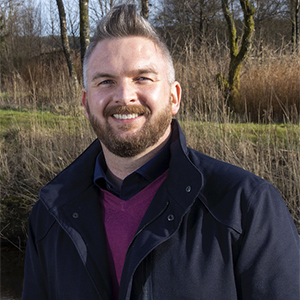Innovations in combating climate change to be presented at the ClimateTech Investing Forum

With COP27 bringing together a host of world leaders in Sharm El-Sheikh, Egypt, this November, the subject of global decarbonisation is being brought right back to the top of the world agenda.
While the 2022 United Nations Climate Change Conference will bring all aspects of environment action into the spotlight, reaffirming and setting goals to reverse the effects of the ongoing crisis, innovators and entrepreneurs are devising powerful solutions to make these sustainability aims a reality.
As UN Secretary-General António Guterres said: “The climate emergency is a race we are losing, but it is a race we can win.”
Held in Lausanne, Switzerland, on December 6 and 7, the ClimateTech Investing Forum 2022 is a cutting-edge event held in direct response to the drive to fight the crisis from both family offices and family foundations.
The event will sees up to 40 technology companies pitching investment opportunities to an audience of 150 delegates, including family offices, private wealth holders, VCs, corporations, angel investors and many more. Central to the event is a forum programme that will address some of the major challenges and opportunities across ClimateTech investment today.
The presenting companies, of which three are highlighted below, represents the truly global nature of the ClimateTech ecosystem, with leading organisations from Europe, North America, the Middle East and Asia.

Hydro Nation Chair Research & Innovation Programme
David Millar, senior innovation fellow
What does Hydro Nation Chair Research & Innovation Programme do?
We are catalysing research and innovation that will enable Scottish Water to lead the way in going beyond net zero by 2040.
Our technology programme has global reach and is market led. We are recruiting the most exciting tech start-ups from around the world ensuring alignment to Scottish Water’s net zero challenges. We provide these pioneering businesses with a long-term support programme, including funding, education, facilities, market access, field trials and investment - all designed to create the ultimate deal flow of game-changing climate tech solutions helping Scotland lead the global charge to net zero.
How did you pinpoint the need for the service?
Too many early-stage technology businesses fail because of poor support – particularly those that are deep tech (science / engineering-based). If we seek to lead the way in delivering net zero, we must transform the status quo by correcting ecosystem failures and building the ultimate tech start-up support programme that is market-led and offers a complete support package with no gaps.
How is what you do an improvement upon current methods?
Most ecosystems offer short intense support programmes usually focused on education and mentoring - and perhaps some funding. This environment causes start-ups to jump from programme to programme looking for the next appropriate support package to help their journey, with many of them faltering on the way. The Hydro Nation Chair technology programme removes all that by providing the ultimate support package in one place, offering everything from funding, education, facilities, market partners and field trials to specialist expertise, mentors and investors.
The implications are transformational.
What are the implications for climate and the journey to net zero?
The implications are transformational. Firstly, for our customer – the water Industry – we can provide a curated deal flow of selected and coached tech start-ups clearly aligned to market net zero challenges. Our programme is designed to shortcut the route to commercial success through a complete and long-term support package – delivering impact where it is needed most and fast.
Secondly, for start-ups we are the one-stop shop for commercial success in the Scottish and UK water sector. Those that are selected to participate in our programme are coached and supported to build a clear line of sight to commercial success. We reduce the risk of failure through our bespoke programming and complete support offering, deep and broad market access and flexible funding opportunities.
Thirdly, for Investors we aim to become the centre of gravity for water innovation and technology, offering access to a community of exciting, transformational tech businesses supporting and leading Scotland’s efforts in delivering net zero before anyone else.
How has the platform been received so far?
Since launching in March, 2022, the broader Hydro Nation Chair programme has already funded eight research and technology projects and reviewed and assessed more than 180 technologies from around the world. The start-up programme is launching in early 2023 with excellent feedback and support from Scottish Government, Scottish Water, climate tech start-ups and investors. To date, we have 24 partners signed up to support the programme.
Are there any other potential uses for the platform?
The start-up programme has been designed in such a way so that it becomes a blueprint for use by other offerings within Scotland’s International Environment Centre (SIEC), under which the Hydro Nation Chair programme sits. SIEC is funded by the UK and Scottish Governments, as part of the Stirling and Clackmannanshire City Region Deal. SIEC will become a hub of environment innovation excellence in the heart of Scotland with Hydro Nation Chair Programme being its vanguard, stimulating opportunity and prosperity within some of Scotland’s most deprived communities.
 Stamp Free
Stamp Free
Hugh Craigie Halkett, managing director and founder
What does Stamp Free do?
Stamp Free uses artificial intelligence to allow postal customers to send parcels, letters and online returns just by using their phones. They do not need postage stamps, parcel labels or printed-off postage. Our technology enables a user to write a handwritten barcode (six or eight digit codes) on a mail item, scan/validate it with the camera function on their phone, then post it in the normal way. Our handwritten barcodes can be read quickly and accurately, just like a conventional barcode… But now anyone can write a barcode.
How did you pinpoint the need for the service?
From our own experience… Our managing director drove several miles in the pouring rain to a retail outlet to buy stamps for a couple of letters. He sat in the car park struck by the absurdity of the fact he could send an email or a text in a split second but had to drive to buy sticky labels to put on a letter. He thought there must be a digital equivalent of a stamp or parcel label, using a mobile phone. From that, the concept of Stamp Free was born.
The old adage ‘Think before you print’ has never been so relevant.
How is what you do an improvement upon current methods?
The Stamp Free Digital Postage Solution has many benefits but the three main ones are:
– People and businesses can now send parcels, letters and online returns whenever they want just by using their smartphone, no need for printers or computers. You always have the correct digital postage stamp or digital parcel label to hand whenever you need it, simply by writing a handwritten barcode replacing a conventional barcode but with all the same information.
– 200 billion parcel labels are produced annually, requiring ten million trees to be cut down every year. Parcel labels and stamps are bad for the environment and our solution provides an eco-friendly, as well as convenient, solution.
– Parcel labels and stamps cost postal companies and commercial carriers money to produce. Removing them saves money wherever labels or stamps are generated - no need for thousands of kiosks across the country producing parcel labels and no need for staff to maintain them and so on.
What are the implications for climate and the journey to net zero?
The old adage ‘Think before you print’ has never been so relevant. The ten million trees cut down annually to produce parcel labels equate to an area the size of Northern Ireland. Our solution removes the need for this and, by making even a small dent, can have a positive impact on our planet.
How has the platform been received so far?
Stamp Free has won two global postal customer and technology innovation awards to date voted for by CEOs and board members of postal companies from around the world. We have been nominated for a range of further awards later this year.
Are there any other potential uses for the service?
Our technology can be used wherever a conventional barcode is used today, in whatever sector or industry. The convenience of anyone being able to write a barcode which can be scanned/validated as quickly and accurately as a conventional barcode provides almost limitless use cases.
 Hexem SA
Hexem SA
Michael Siegert, founder
What does Hexem do?
Hexem has developed a wastewater treatment technology which allows the recovery of energy and clean water at a much smaller footprint than current technologies. Our biogas systems use highly contaminated waste streams from the food and beverage industry. The organic contamination in industrial wastewater is our energy source. Using state-of-the-art technology, the treatment of high-strength wastewater like this is difficult and very expensive, while the resources are completely wasted.
How did you pinpoint the need for the solution?
Hexem was approached by a Swiss utility company who reached the capacity limit of their wastewater treatment plant. Realty is extremely valuable in this area and the company simply did not have enough space to expand their plant. At the same time, a local cheese maker decided to build a new factory. Making 1kg of cheese produces nine litres of cheese whey and about one-to-two litres of wastewater, both of which have a very high organic load. Only very large dairies have the resources to valorise the nutritional value of whey. For all others, it is a mere by-product and usually goes to waste. The high organic load of cheese wastewater makes it very difficult to treat using current technology.
How is what you do an improvement upon current methods?
Hexem's biogas systems are science-based and accelerate the reaction time by at least a factor of 20. This allows us to reduce the system size by the same factor. Our patented control method guarantees a stable performance, which was a major roadblock, before we can introduce it into the market. We also have a patent pending on nitrogen removal, which is included in the price of our system. Nitrogen removal is usually expensive and very slow. Nitrogen, in the form of ammonia, also inhibits the biogas production. With a Hexem System, our customers do not need to worry about it any longer. Lastly, our system runs on grid pressure, making direct injection possible - a benefit which is also included in the price.
Everyone makes money while saving the planet. Is there a better way to tackle global warming?
What are the implications for users and the climate?
Using Hexem's biogas system, our customers reduce their wastewater treatment bills while producing valuable biogas. The food and beverage industry suffers immensely under the current gas prices because natural gas is deeply integrated in their production processes. Using a Hexem System, our customers benefit two-fold: they reduce their wastewater treatment cost and their energy bills. This helps to keep food prices at the current level or may even reduce them.
Hexem's biogas systems produce clean energy because biogas is made from food waste. Our customers reduce their carbon footprint and it benefits them in countries with carbon taxes. But most importantly, the reduced carbon footprint also slows global warming. Or to put it catchy terms: Everyone makes money while saving the planet. Is there a better way to tackle global warming?
How has the platform been received so far?
We have successfully tested a pilot in said Swiss wastewater treatment plant using cheese whey. We would now like to build on this success and increase the capacity. Hexem is now replicating this success in the Netherlands. Of course, we are looking to build more pilots together with our customers before we will launch a fully industrialised product.
Are there any other potential uses for your systems?
Initially, we planned to use this technology as a large-scale, long-term energy storage technology. This is because it converts CO2 and electricity into methane gas. The benefit of this technology is that depleted gas fields could be used to store the produced methane gas.
This is a very stable storage method. However, interviews with electric utility companies were rather sobering in that they were very reluctant to integrate experimental technology in their grid. And I totally understand this.
This why we moved to an industry which is more open to innovation: the wastewater sector. There, we had requests from bio-ethanol companies, palm oil plants and shipbuilders. The technology was even tested with wastewater from oil refineries.
For more information and to book a place, visit www.climatetechinvesting.com.
To participate, email Anton Paul via antonpaul@campdenwealth.com.
Campden Wealth is not an investment advisory service and is not a registered investment adviser or broker/dealer and has performed no due diligence and does not endorse any investment services, strategies or managers listed in Managerlink or at any other Campden Wealth event. You should perform your own extensive due diligence.






